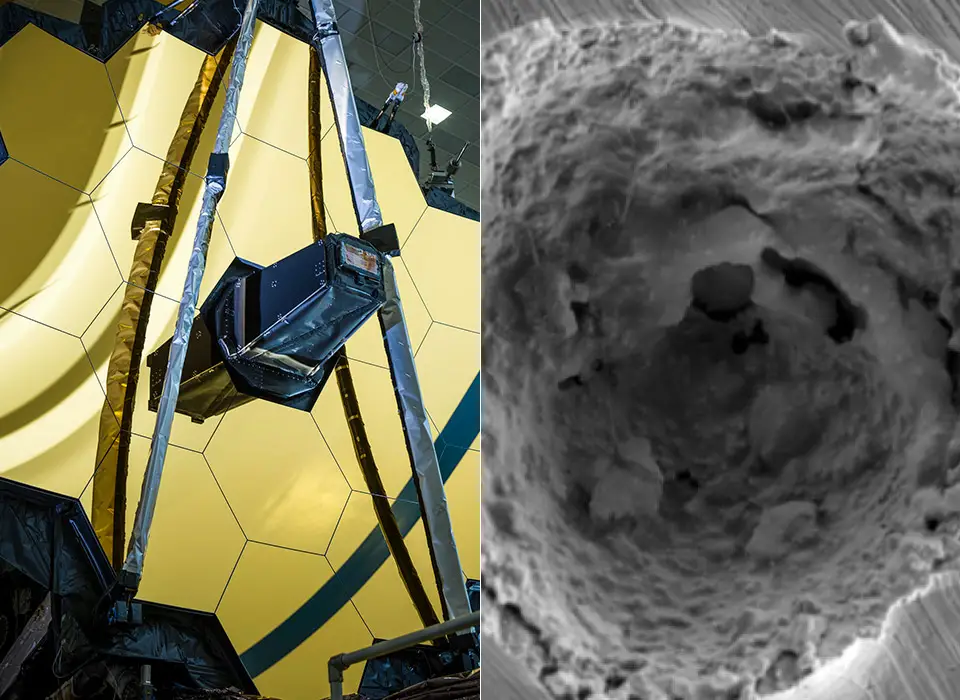The first significant micrometeoroid hit on NASA’s next-generation space observatory occurred less than six months after launch, but the agency seems unconcerned. On December 25, 2021, the James Webb Space Telescope, often known as Webb or JWST, was launched. It has spent the months since traveling out to its deep-space station and preparing for research observations, a laborious procedure that has gone astonishingly well; NASA just announced that the first science-quality photographs from the telescope would be released on July 12.
Now, the organization announced(opens in new tab) on Wednesday (June 8) that the observatory had been hit by micrometeoroids, which are small particles of space debris. But don’t worry: the observatory’s schedule and scientific heritage are anticipated to be unaffected. “We assumed that periodic micrometeoroid hits would gently reduce telescope performance over time with Webb’s mirrors exposed to space,” said Lee Feinberg, Webb’s optical telescope element manager at NASA’s Goddard Space Flight Center in Maryland, in a statement.
“We’ve seen four smaller quantifiable micrometeoroid impacts since launch that were in line with estimates, and one lately that is greater than our degradation projections predicted.” According to the statement, the most significant of the effects happened between May 23 and May 25, affecting the C3 region of the 18-piece gold-plated hexagonal main mirror. JWST, like other spacecraft, is anticipated to encounter micrometeoroid impacts and is built to endure them.
Engineers at the observatory even put mirror samples through genuine hits to see how they would affect the mission’s findings. According to the statement, the current effect was greater than those that mission personnel had predicted or could test on the ground. Despite the fact that the incident occurred so early in the observatory’s life, NASA officials are optimistic that the $10 billion telescopes will continue to function properly.
According to NASA Goddard’s technical deputy project manager Paul Geithner, “We always knew that Webb would have to weather the space environment, which includes severe ultraviolet radiation from the sun and charged particles, cosmic rays from exotic sources in the galaxy, and occasional hits by micrometeoroids inside our solar system.” “We developed Webb with performance margins in mind — optical, thermal, electrical, and mechanical — to guarantee that it can complete its ambitious research goal even after many years in orbit.”
In addition, authorities emphasized in the announcement that JWST launched with its optics in an even better form than the agency had anticipated. Officials noted that certain micrometeoroid strikes can be anticipated. Personnel may guide JWST’s optical systems into safety during known meteor showers, for example, when the spacecraft is slated to pass through known meteor showers. The current collision, on the other hand, was not part of a meteor shower, and the statement described it as “an unavoidable random occurrence.”
Engineers may fine-tune the 18 major mirror segments on the observatory after an impact to keep the mirror as a whole well-calibrated.
To better understand the JWST mission, NASA is looking at both the event and the environment in which it will take place throughout its time on the ground. The telescope is circling the Earth-sun Lagrange point 2, which is about 1 million miles (1.5 million kilometers) away from Earth in the opposite direction of the sun, according to astronomers. “We’ll utilize this flight data to improve our study of performance over time and build operational ways to ensure we get the most out of Webb’s imaging capabilities for many years to come,” Feinberg added.
Source: Live Science

